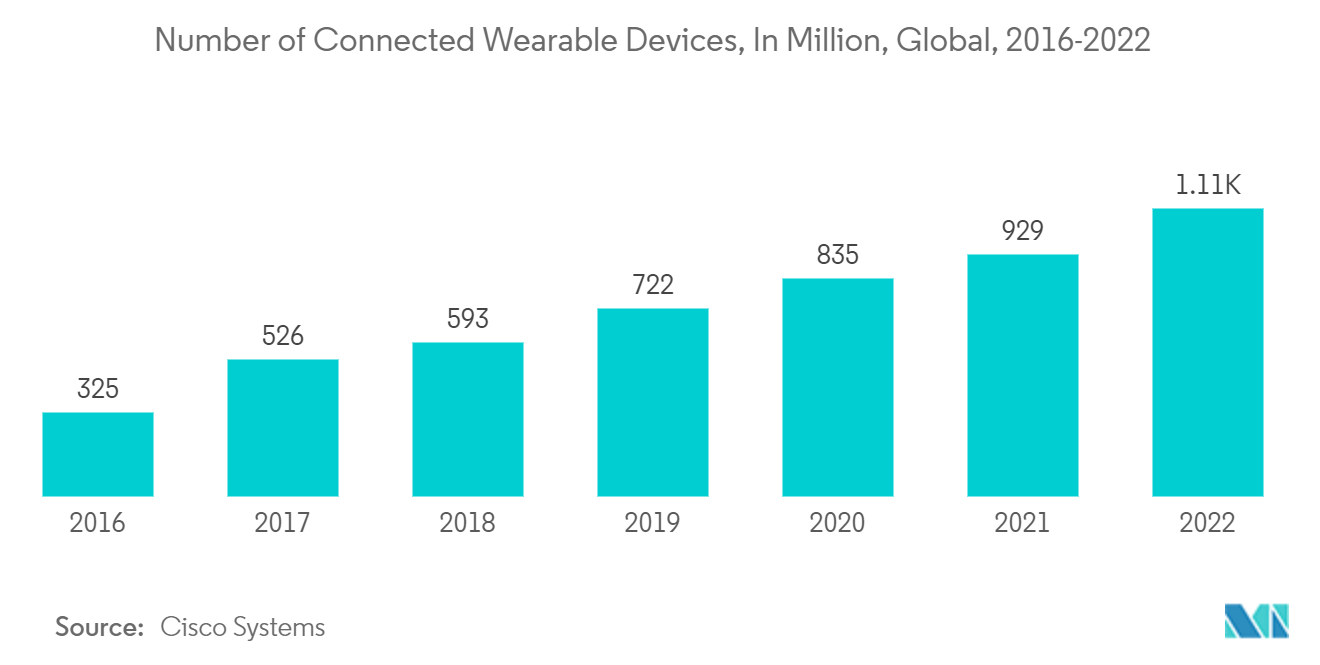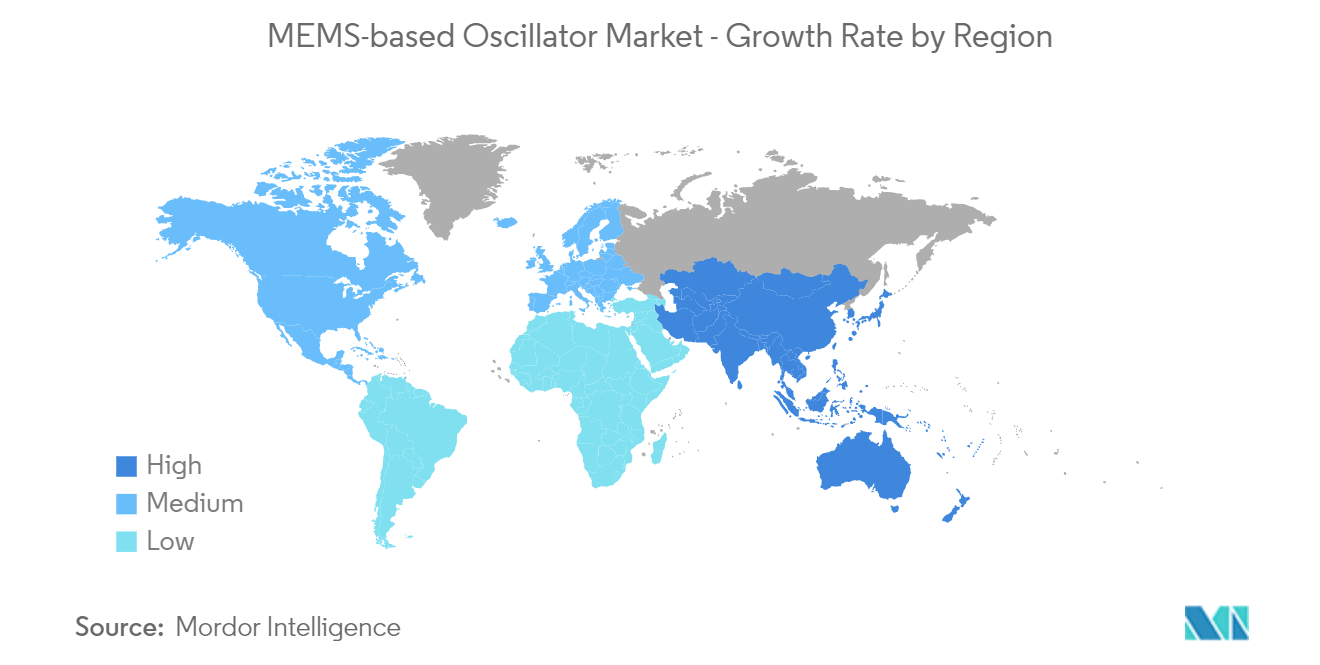Market Trends of MEMS-based Oscillator Industry
This section covers the major market trends shaping the MEMS-based Oscillator Market according to our research experts:
The Consumer Electronics Segment Holds Significant Market Share
- Oscillators are electronic circuits that develop an electrical signal of a particular frequency by utilizing the vibrating crystal's (piezoelectric material) mechanical resonance. MEMS oscillators are complete timing systems based on a programmable architecture. It further witnesses significant demand aided by improved functionality, enhanced performance, and electronic device miniaturization. An oscillator works on the regulations of oscillation, a periodic fluctuation between two things based on energy changes. Computers, smartwatches, mobile systems, and many other devices use MEMS oscillators.
- The rise in portable and wearable electronics drives the need to reduce the energy consumption and footprint of all electronic components, especially oscillators. Oscillators based on Micro-Electro-Mechanical Systems (MEMS) technology combine accurate frequency generation with low power consumption and are becoming increasingly popular in clock circuits.
- MEMS oscillators offer an appealing combination of low power consumption, small size, high performance, and physical robustness, making them ideal for numerous applications, specifically in portable and wearable electronics. Further, cell phones, computers, watches, radios, and many other devices depend on their success on an electronic oscillator that delivers the output with a precise frequency to develop timing pulses and synchronize events.
- Moreover, in May 2022, TAITIEN launched ultra-low current crystal oscillators, OZ-D and OY-D, with current consumption of only 1.4μA, featuring a low power consumption design, small size, and high precision, that can be widely used in wearable gadgets and the Internet of Things (IoT) devices.
- Innovations across MEMS timing technology significantly contribute to physical space and power savings in wearable applications while improving reliability. Cost in such cases presents significant challenges as the segment falls into the consumer category. Further, with the advent of 5G network rollouts, particularly in consumer markets, the demand for compacter, higher frequency enabled, less timing slop-based MEMS oscillators for consumer electronics is expected to grow.

Asia-Pacific is Expected to be the Fastest Growing Market
- The Asia-Pacific is becoming a primary regional market, owing to the presence of countries such as China, Japan, India, and South Korea. The foundation of organizations based out of the region includes the rising demand for wearable technology such as fitness activities, smart watches, medical monitors/devices, etc. This factor indicates the considerable growth potential for the MEMS-based Oscillator Market in the Asia-Pacific region.
- In addition, intelligent wearables in the region are becoming fashionable as consumption upgrade is gaining momentum and tech-savvy consumers are willing to pay for such gadgets to embrace a more convenient and tech-driven life.
- The abundant availability of raw materials and the low establishment and labor costs have also helped companies launch their R&D and production centers in the region. For instance, Kyocera, a Kyoto, Japan-based electronics manufacturer, announced the construction of a new research and development center in January 2021 at its Kokubu campus in Kirishima City, Kagoshima, Japan.
- Players operating in the market have also adopted various growth strategies, such as acquisitions and integrations, new product offerings, collaborations, partnerships, and business expansions to accommodate the market's needs and expand their customer base.


